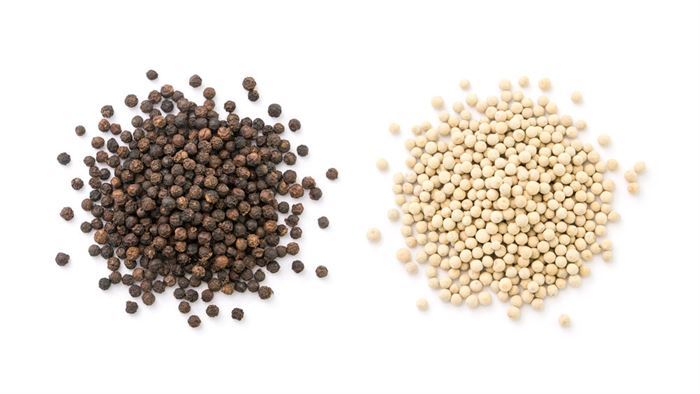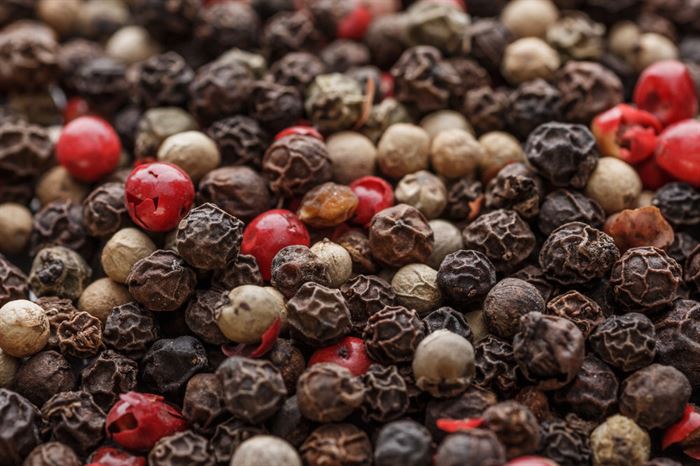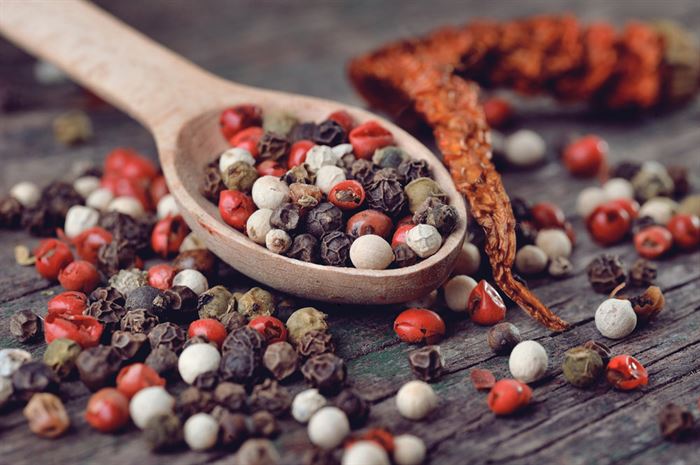The “white pepper vs black pepper” argument is raging hotter than ever in the world of spices. Despite coming from the same plant, they are very different and have a big impact on your food.
We’ll look at the distinctive qualities of white and black pepper in this article, as well as how their flavours, health advantages, and culinary uses vary. Understanding these variations helps guide your cooking decisions, improving flavours and nutritional value. Join us as we explore the complexities of these two legendary spices.

Contents
- 1 The Origin Story: Understanding White and Black Pepper
- 2 Taste Profile: Contrasting Flavors of White and Black Pepper
- 3 Health Impact: Nutritional Comparison of White Pepper and Black Pepper
- 4 Culinary Uses: When to Use White Pepper vs Black Pepper in Cooking
- 5 Comparative Analysis: White Pepper vs Black Pepper
- 6 A Final Word: The Significance of Understanding White and Black Pepper
The Origin Story: Understanding White and Black Pepper
Defining White and Black Pepper: A Historical Context
It’s crucial to begin by looking at the origins of “white pepper vs black pepper” when researching this topic. The Piper nigrum plant, a tropical vine that is endemic to India’s Malabar Coast, produces the fruit from which both spices are derived. To produce white or black pepper, many methods are applied to the fruit known as peppercorn.
From the Same Plant: The Creation of White and Black Pepper
The unripe, green fruit is used to make black pepper; it is briefly cooked in hot water before being dried, which turns the skin black. On the other hand, the ripe, red fruit is used to make white pepper. A whiter, smoother appearance is obtained by removing the upper layer either before or after drying. Due to the diverse flavours produced by the different processing methods, the “white pepper vs black pepper” dispute is a fascinating journey through taste and culture.

Taste Profile: Contrasting Flavors of White and Black Pepper
Decoding the Flavors: White and Black Pepper Profile
The conflict between “white pepper vs black pepper” when it comes to flavour is fascinating. Black pepper has a black, wrinkled surface and a strong, spicy flavour with a warm, rich undertone. It naturally has an earthy scent that is frequently referred to as woodsy or piney.
White pepper, on the other hand, has a gentler, more delicate flavour and is renowned for its smooth, light appearance. It has a hint of heat and is flavoured with sweet undertones. White pepper’s distinctive musky scent lends foods a special depth of flavour.
Choosing the Right Pepper: Taste-Based Preferences
The flavour profile you choose frequently dictates whether to use white or black pepper. Because of its potent flavour, black pepper is ideal for adding a finishing touch to salads, marinades, and substantial foods. In light-colored sauces, soups, and foods where you want the pepperiness without the flecks, white pepper’s milder flavour works nicely. Your cooking experience can be greatly improved by being aware of these distinctions.

Health Impact: Nutritional Comparison of White Pepper and Black Pepper
Nutritional Breakdown: A Closer Look at White and Black Pepper
Despite the “white pepper vs black pepper” controversy in the culinary world, both spices have identical nutritional advantages. Although they have little calories, they are a good source of vitamins and minerals, particularly vitamin K, iron, and manganese. Additionally, both contain piperine, a substance that improves nutrient absorption and may have health advantages.
The Health Angle: Benefits and Drawbacks of White and Black Pepper
It’s interesting to note that black pepper is reported to contain more piperine. Increased production of digestive enzymes and the promotion of gut health may arise from this. The drawback is that some people could feel ill from its strong flavour if they consume it in large quantities.
Although white pepper is milder, it still has many healthy properties. However, since the outer layer has been removed, it may contain less piperine. Similar to black pepper, overindulgence may cause a moderate stomach upset. However, these spices can be a healthy supplement to a balanced diet when used in everyday cooking.

Culinary Uses: When to Use White Pepper vs Black Pepper in Cooking
Traditional Recipes: Incorporating White and Black Pepper
The desired flavour profile and visual are the most important factors in the culinary competition “white pepper vs. black pepper“. Due to its delicate flavour, white pepper is frequently used in French, Chinese, and Thai cuisine. It’s ideal for foods like mashed potatoes when you don’t want any black specks, white sauces, and cream soups.
Black pepper, on the other hand, is a worldwide seasoning that is used in a variety of cuisines and is noted for its strong, fiery kick. For that extra heat, it works well in hearty meat recipes, stews, and as a table seasoning.
Kitchen Tips: Making the Most of White and Black Pepper
Keep in mind that less is more when using white or black pepper. Start with a small quantity, then titrate to taste. Additionally, freshly ground pepper is preferred because pre-ground varieties may lose flavour over time. You can negotiate the white pepper and black pepper paradox with culinary finesse if you are aware of these uses and tips.

Comparative Analysis: White Pepper vs Black Pepper
Deciphering Differences and Similarities: White and Black Pepper Side by Side
There are only a few key issues that matter in the “white pepper vs. black pepper” argument. Despite coming from the same plant, they have different processing, looks, tastes, and culinary applications. White pepper has a more delicate, somewhat sweeter flavour than black pepper, which has a strong, spicy flavour. Despite these variations, both provide comparable nutritional advantages, giving meals not just flavour but also beneficial qualities.
Quick Reference: White and Black Pepper Compared
To provide a snapshot, let’s outline the major characteristics:
| Factors | White Pepper | Black Pepper |
| Taste | Milder, slightly sweet | Robust, spicy |
| Color | Light, smooth | Dark, wrinkled |
| Culinary Uses | Light-colored dishes, soups, sauces | Universal seasoning, meat dishes, stews |
| Health Benefits | Vitamins, minerals, digestion aid | Higher piperine content, promotes gut health |
Remember, the choice between white and black pepper depends on your taste preference and the specific culinary application.

A Final Word: The Significance of Understanding White and Black Pepper
In our exploration of “white pepper vs black pepper”, we’ve delved into their origins, compared taste profiles, health impacts, and culinary uses. The key takeaway is that understanding these differences can greatly enhance your cooking skills and health awareness. Ultimately, both spices hold their unique appeal, and choosing between them depends on your culinary aims and personal preferences.


